BALLS Experimental Rocket Launch
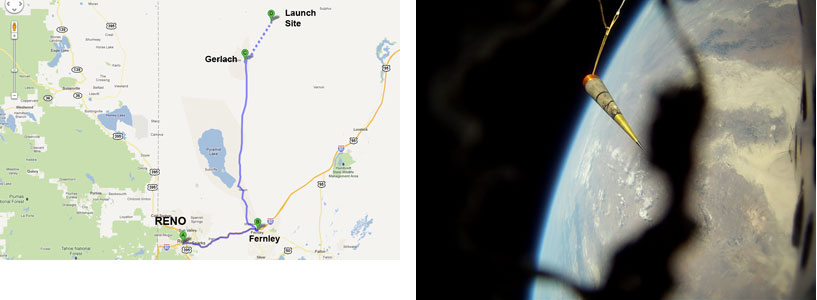
Left side is Google-maps; Right side is a picture I copied from Derek Deville. The pointy object is the beginning of parachute deployment at apogee. The black smear in the middle of the frame is plastic from the camera which began to melt as the rocket hit Mach 3!!
Derek's project is a "must see" ...
http://www.ddeville.com/derek/Qu8k.html
The Journey
The journey begins in Reno Nevada. Taking the freeway east into the desert
the first waypoint is a small town named Fernley. At Fernley, exit the
freeway and begin a long trek north on a typical desert road.
For a 100 miles there are no signs of human life: no cattle, no ranches,
no other cars.

75 miles down the road is a small town named Planet Exit. I think it is funny to say that the rocket guys are located 25 miles beyond Planet Exit (or the end of the Earth)
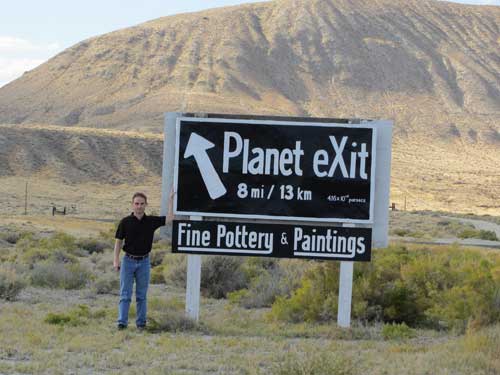
When the scrubby desert brush fades into a sterile landscape where plants, birds, and bugs can no longer survive, the launch site is close. (25 miles) At this point the directions say get off the road and cross the desert to the launch site.
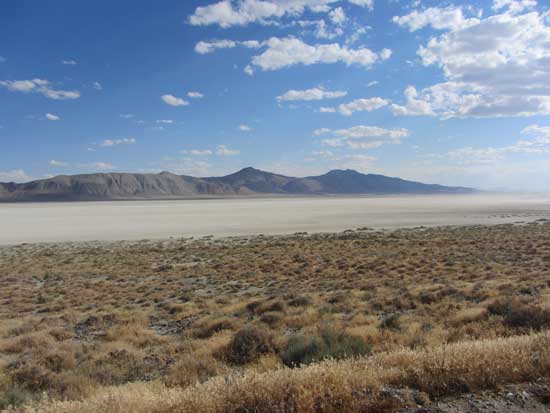
I know the launch site is somewhere around here. Unfortunately the desert plays tricks, and even with field glasses and a decent sense of direction, nothing but sterile landscape is visible - as far as the eye can see. The mountain I was using for dead reckoning is now fading into soft hues of late afternoon and hard to see. Lesson #1: Always travel with a GPS.

After driving in circles for what seemed like hours, I found a set of fresh tire tracks. I know these tracks will lead {somewhere}.
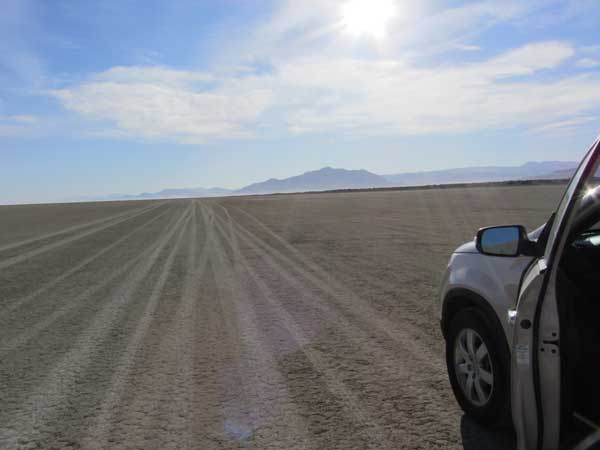
More signs of life.
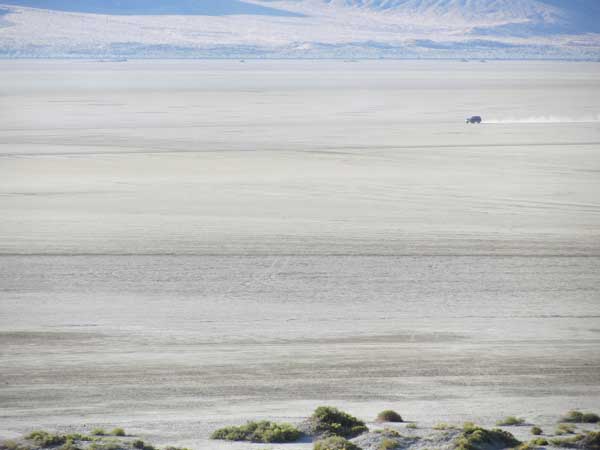
The R Hybrid Project
The designer and builder is Jeff Jakob. The rocket is an R class liquid/solid hybrid rocket, burning N2O and rubber. The rocket is expected to deliver 70,000 lbf-sec of thrust. Anticipated altitude is 40 miles with a top speed around mach 4!!! Every detail of the rocket, from the recessed screws to prevent concentration of heat, to the CO2 canon to release a parachute for safe return has been carefully analyzed, designed, and tested.
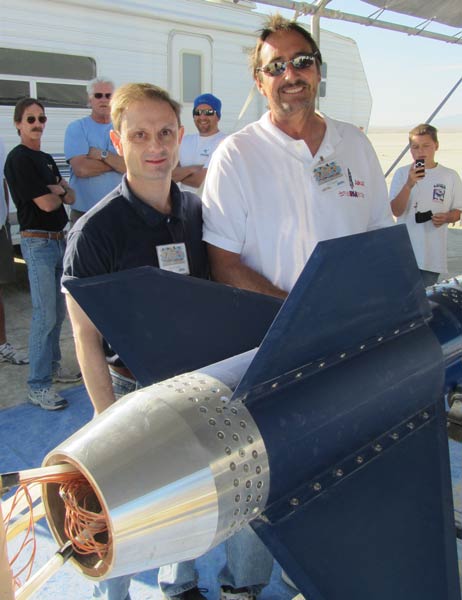
Another picture of the R hybrid rocket. The desert workshop resembles the pit area of an Indy-500 race more than a dusty outpost. Notice the ceiling lights and hoses for pneumatic tools.
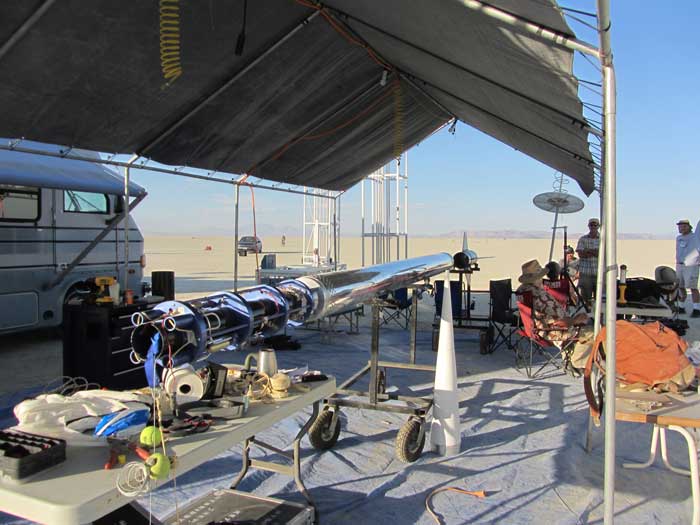
A big antennae.
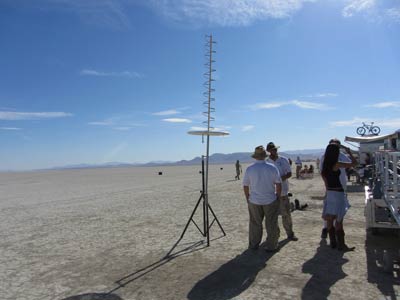
The launch tower for the R hybrid. The rocket will be loaded in a horizontal configuration. An extension to the tower will be bolted in place. And the assembly will be winched vertical. The liquid oxidizer is loaded remotely. The launch tower continually measures the weight of the rocket so a signal can be generated when the oxidizer tank is full.
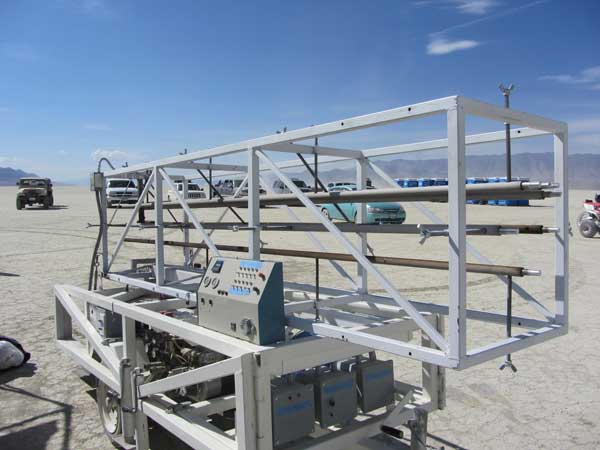
That's a lotta ROCKET FUEL!
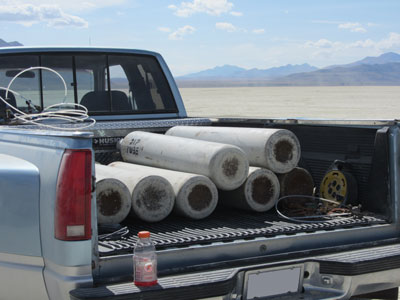
Out to the tower.
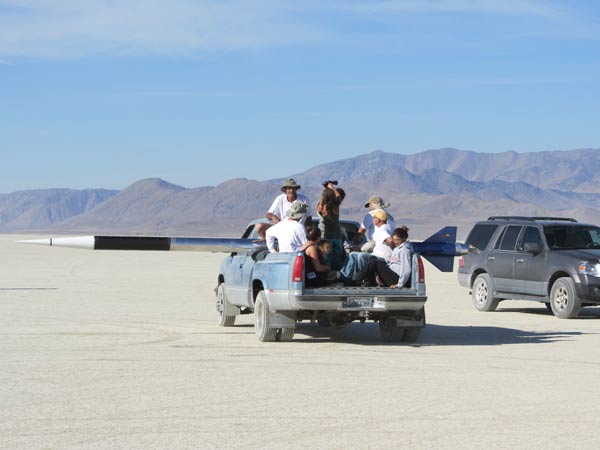
Setup on the tower
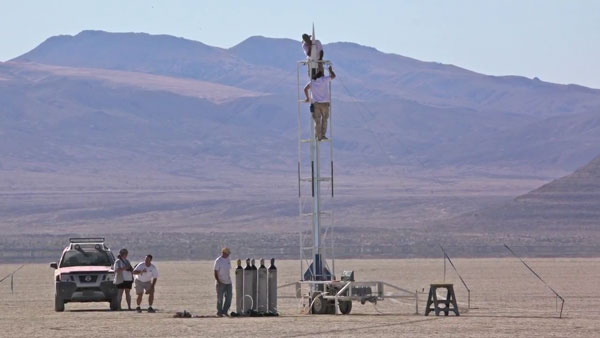
Launch!
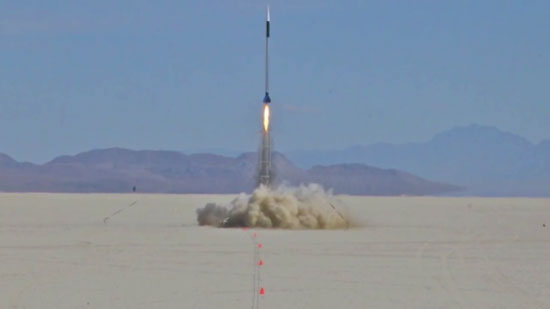
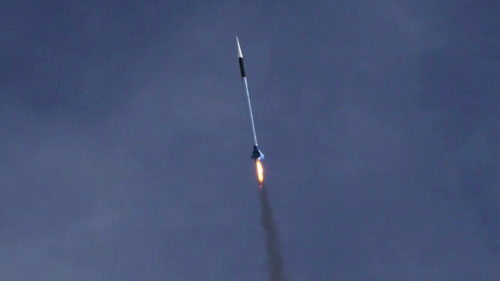
Video credit: Steve Jurvetson
SYNOPSIS:
The rocket took off, sailed out of sight, and was
never seen again. Telemetry failed at ~40k feet. 
Alternate forms of transportation
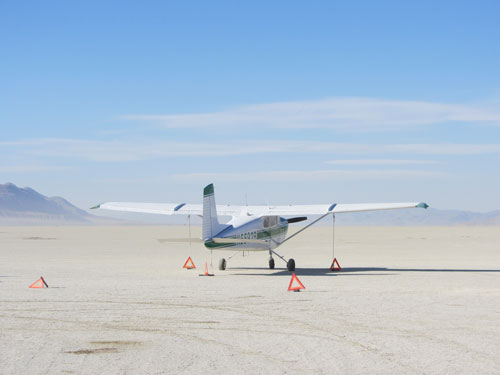
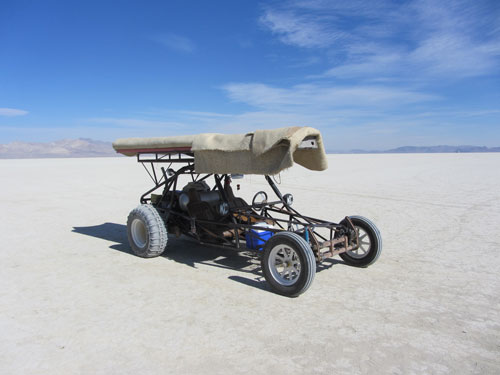
Dust Storm
On-and-off all weekend high winds created nasty dust storms. Unfortunately the range closed early and not many rockets flew.
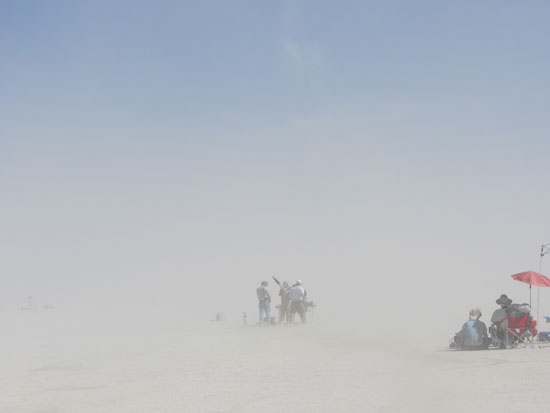
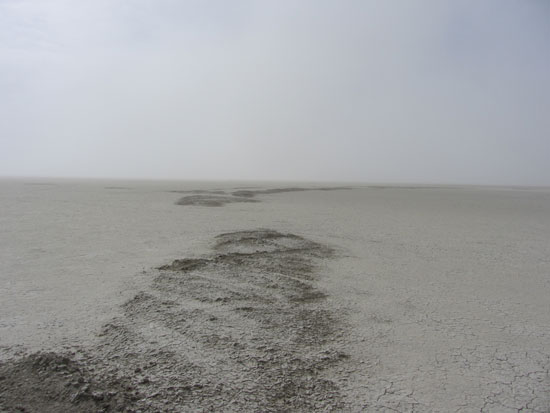
Crash
...and no rocket launch is complete without a crash. This rocket was trying to loft a beer keg into the sky.It didn't work!!
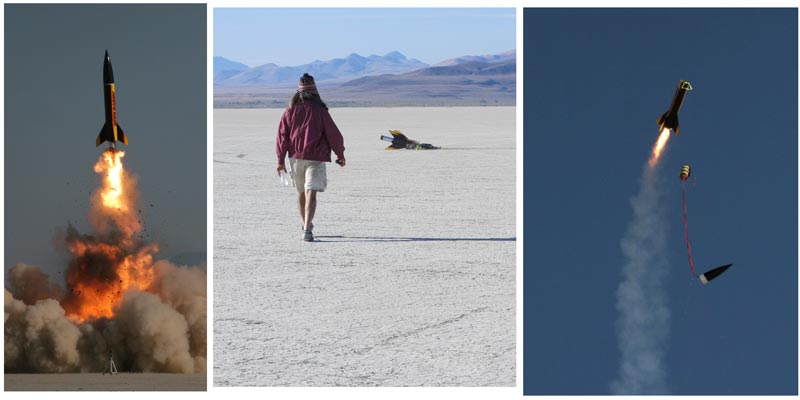
Photo credit: Mark Spiegl / David Reese
Just a pretty photo
Great photo of a 75,000 foot mach 3.2 flight.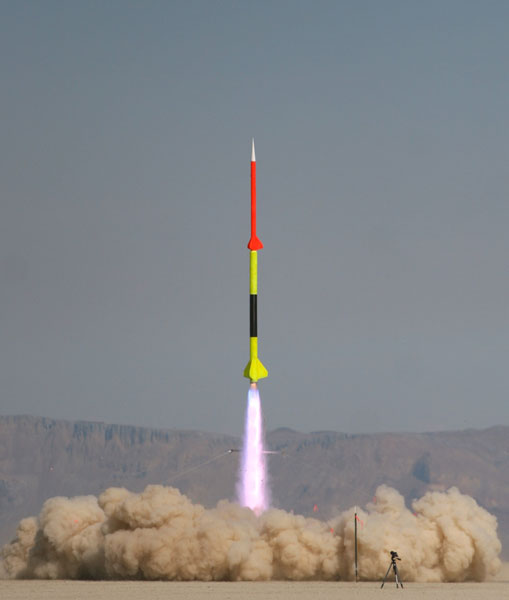
Photo credit: David Reese
Derek Deville's QU8K project
Complete description, full length video, and tons of great pictures:
http://www.ddeville.com/derek/Qu8k.html
 More pictures and video coming soon
More pictures and video coming soon
